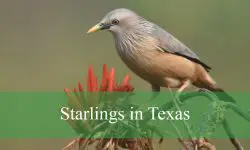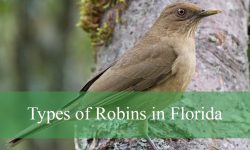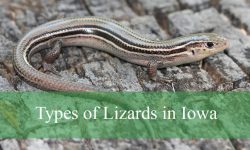Earwigs are small nocturnal insects that often raise curiosity because of their unique appearance and long pincers. In Florida, several species thrive in the state’s warm, humid climate, where they play important ecological roles in both natural and urban environments.
Although their pincers look intimidating, earwigs are mostly harmless to humans. They can sometimes be found in gardens, under mulch, or even inside homes after heavy rains. While a few species may nibble on plants, many are beneficial predators that help control garden pests.
This guide explores five types of earwigs found in Florida, highlighting their identification, habitats, and behaviors. By learning how to recognize these species, you can better understand their role in the ecosystem and how to manage them around your home and garden.
Different Types of Earwigs Found in Florida
European Earwig (Forficula auricularia)
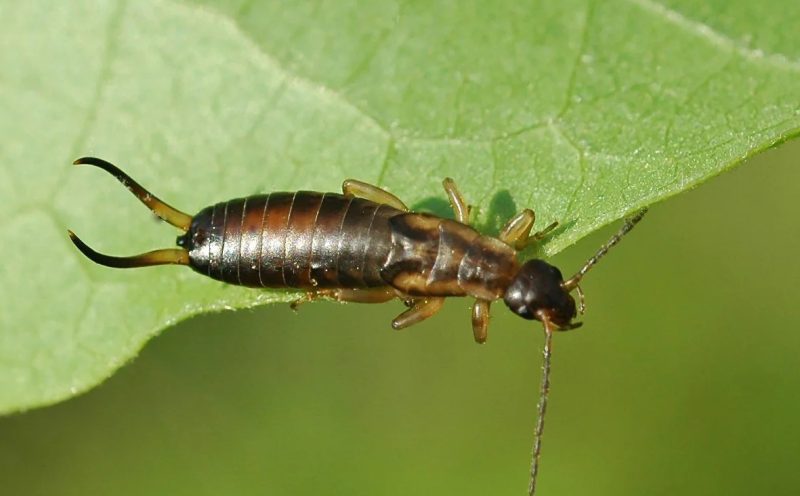
The European earwig is one of the most recognizable species due to its reddish-brown body, elongated shape, and distinct forceps-like pincers at the tip of its abdomen. Adults typically measure about 0.5 to 0.8 inches in length, with males having more curved pincers than females. Their wings are functional, but they rarely fly, preferring to crawl through soil, mulch, and leaf litter.
This species is omnivorous, feeding on a wide range of materials, from decaying organic matter to living plants and small insects. Gardeners sometimes view them as pests because they may chew on seedlings, flowers, and fruit. However, they also play a beneficial role by preying on aphids and other small garden pests.
European earwigs are nocturnal and hide during the day in dark, moist spaces such as under bark, stones, and flowerpots. They emerge at night to forage, which often surprises homeowners when they find them indoors. These insects prefer environments with plenty of ground cover and moisture, making Florida’s humid climate suitable for their survival.
Reproduction occurs in late fall or winter, when females lay eggs in underground burrows. Unlike many insects, the European earwig exhibits maternal care, guarding and cleaning her eggs until they hatch. The nymphs resemble small versions of adults and go through several molts before reaching maturity.
Ringlegged Earwig (Euborellia annulipes)

The ringlegged earwig is named for the faint light-colored bands that appear on its dark legs. Adults are smaller than the European earwig, usually reaching about 0.3 to 0.5 inches in length. Their bodies are dark brown to nearly black, with straight pincers that help distinguish them from other species.
Unlike the European earwig, this species is flightless and lacks developed wings. It spends most of its time crawling through leaf litter, mulch, and soil. Ringlegged earwigs are highly adaptable and thrive in Florida’s warm climate, especially in gardens, greenhouses, and compost piles.
Their diet is mainly composed of decomposing organic matter, but they also feed on small insects and plant material. This makes them both beneficial and occasionally harmful in gardens. They help recycle nutrients by breaking down organic debris, but in large numbers, they can damage tender plant shoots and seedlings.
Ringlegged earwigs are nocturnal, hiding in soil crevices and other damp shelters during the day. Reproduction involves egg-laying in soil burrows, with the female protecting her eggs until hatching. Colonies of this species can sometimes become noticeable around homes during rainy periods when they seek drier shelter indoors.
Seaside Earwig (Anisolabis maritima)

The seaside earwig is well adapted to coastal environments and is frequently found along sandy beaches, salt marshes, and tidal zones in Florida. Adults are larger than many other earwigs, often measuring up to 1 inch in length, with dark brown to black bodies and strong pincers.
Unlike some species, seaside earwigs are entirely wingless and rely on crawling for movement. Their flattened bodies allow them to slip into narrow crevices under driftwood, seaweed, or stones along the shoreline. This adaptation helps them survive in areas with fluctuating moisture and salinity levels.
They are primarily scavengers, feeding on decaying seaweed, plant matter, and small invertebrates. Their role as decomposers is especially important in coastal ecosystems, as they help break down organic material washed ashore. They are rarely considered pests since they generally remain near the beach and do not invade homes.
The seaside earwig reproduces in moist sand burrows, where females lay eggs and protect them until hatching. Their presence is often most noticeable after high tides, when they may be uncovered under debris. This species thrives in Florida’s coastal habitats and plays a key role in shoreline nutrient cycling.
Riparian Earwig (Labidura riparia)

The riparian earwig is one of the largest species in Florida, with adults reaching 1 to 1.25 inches in length. They are light brown to yellowish with dark stripes running along their thorax, which makes them easy to distinguish from other earwigs. Their pincers are long and curved, giving them a more aggressive appearance compared to smaller species.
This species is predatory by nature, feeding on a wide range of insects, including caterpillars, beetle larvae, and other soft-bodied invertebrates. They are considered beneficial in agricultural settings because they help control pest populations. Unlike many earwigs, they are less likely to feed on plants and more inclined toward hunting live prey.
Riparian earwigs prefer moist environments near rivers, lakes, gardens, and agricultural fields. They hide under logs, stones, or soil cracks during the day and actively hunt at night. Florida’s warm and wet climate provides ideal conditions for them to thrive year-round.
Reproduction occurs in soil burrows where females lay eggs and guard them until hatching. Their nymphs resemble adults but lack fully developed pincers and coloring. Over time, they molt into larger, more capable predators. Because of their size and activity, they are one of the more noticeable earwig species in Florida.
Lesser Earwig (Labia minor)
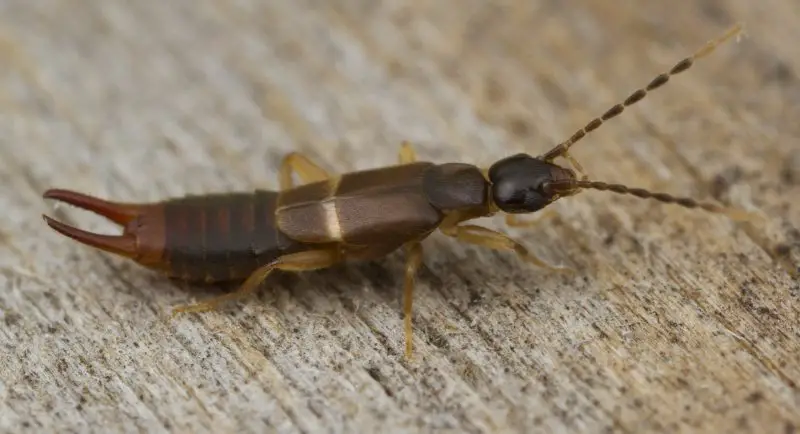
The lesser earwig is much smaller than most other earwigs, typically reaching only about 0.2 to 0.3 inches in length. Its slender body is light brown to tan, with small pincers that are less prominent than those of larger species. Despite its size, it is widely distributed across Florida in gardens, compost piles, and grassy areas.
This species is equipped with functional wings and is capable of short flights, though it usually prefers to crawl. Because of its small size, it can easily go unnoticed, often hiding under leaves, stones, and mulch during the day. Its nocturnal habits bring it out at night in search of food.
Lesser earwigs are omnivorous but primarily feed on decaying organic matter, fungi, and small insects. They help recycle nutrients within the soil, making them beneficial in natural and cultivated environments. However, they rarely cause noticeable damage to plants, unlike some larger earwig species.
Reproduction takes place in soil burrows, with females providing maternal care to their eggs. The young nymphs are miniature versions of the adults and develop quickly in Florida’s warm climate. While not as commonly recognized as the European earwig, the lesser earwig plays an important ecological role in decomposition.
Comparison of Earwig Species in Florida
Trait |
European Earwig (Forficula auricularia) |
Ringlegged Earwig (Euborellia annulipes) |
Seaside Earwig (Anisolabis maritima) |
Riparian Earwig (Labidura riparia) |
Lesser Earwig (Labia minor) |
|---|---|---|---|---|---|
Size |
0.5–0.8 in |
0.3–0.5 in |
Up to 1 in |
1–1.25 in |
0.2–0.3 in |
Color & Markings |
Reddish-brown, males with curved pincers |
Dark brown/black, faint bands on legs |
Dark brown to black |
Light brown/yellow with dark thorax stripes |
Light brown/tan, very small pincers |
Wings |
Present but rarely used |
Wingless |
Wingless |
Wingless |
Winged, capable of short flights |
Habitat |
Gardens, homes, moist soil |
Soil, mulch, compost, greenhouses |
Beaches, salt marshes, under driftwood |
Riversides, gardens, fields |
Gardens, compost, grassy areas |
Diet |
Plants, insects, decaying matter |
Organic debris, seedlings, insects |
Decaying seaweed, small invertebrates |
Insects, caterpillars, beetle larvae |
Decaying matter, fungi, small insects |
Pest Risk |
Moderate – can damage plants |
Moderate – can harm seedlings |
Low – mostly coastal, not household pests |
Low – mostly beneficial predator |
Low – rarely damages plants |
Are Earwigs Dangerous in Florida?
Earwigs are often misunderstood insects, and their intimidating pincers make them look more dangerous than they truly are. In Florida, several earwig species display forceps at the end of their abdomen, which they use for defense, capturing prey, and mating rituals. While they might pinch if handled roughly, the force is usually mild and not strong enough to break human skin. Their pincers are not venomous, and they do not spread diseases to people.
A common myth is that earwigs crawl into human ears and burrow into the brain. This legend has no scientific basis and is mostly the result of their name. Although it is technically possible for an earwig to enter an ear canal by accident—just like other small insects—it is extremely rare and not a behavior these insects actively seek out.
For humans, the real “risk” comes not from bites or stings but from the nuisance of finding them inside homes or gardens. They may appear in bathrooms, kitchens, or basements when moisture levels are high, especially after heavy rain. Indoors, they are more of a nuisance than a threat.
In gardens, earwigs have a mixed reputation. On one hand, they feed on aphids, mites, and other small insects, making them beneficial natural pest controllers. On the other hand, they can chew on young seedlings, fruits, and flowers, causing cosmetic damage. Their impact largely depends on their numbers—small populations are helpful, while large infestations may require management.
How to Identify Earwigs in Florida
Earwigs can be recognized by their slender, elongated bodies and distinctive pincers, known as cerci, located at the tip of the abdomen. The size of these insects varies widely depending on the species. For example, the tiny lesser earwig rarely grows beyond 0.3 inches, while the riparian earwig can exceed one inch in length. Males usually have more curved pincers, whereas females’ pincers are straighter.
Coloration is another helpful clue for identification. European earwigs are typically reddish-brown, while ringlegged earwigs have dark bodies with faint bands on their legs. The seaside earwig is darker overall, often nearly black, and adapted to life along beaches. Riparian earwigs can be identified by their light brown bodies with dark thorax stripes, and the lesser earwig appears pale brown and much smaller than its relatives.
Behavior also helps distinguish one earwig species from another. Winged species such as the lesser earwig may occasionally fly short distances, while most Florida earwigs are wingless and remain close to the ground. Seaside earwigs stay near coastal habitats, riparian earwigs prefer moist soil near rivers, and European earwigs are common in home gardens and urban areas.
If you encounter an earwig in Florida, checking its size, pincers, coloration, and habitat location will usually give you a clear idea of which species it might be. While their appearance may look alarming at first glance, identifying them correctly can help determine whether they are simply passing through or part of a larger garden ecosystem.
Managing Earwigs Around Homes and Gardens
In most cases, earwigs in Florida do not require aggressive control because they are beneficial predators in the ecosystem. However, when their numbers become high, they can damage young plants and invade homes, leading to frustration for homeowners. The best way to manage them is through prevention and habitat modification.
Moisture control is key to reducing earwig populations. Since they thrive in damp environments, reducing excess watering, improving soil drainage, and fixing leaky faucets can make your garden or home less inviting. Indoors, using a dehumidifier and sealing cracks near doors and windows can help prevent entry.
Eliminating hiding spots is another effective step. Removing piles of leaves, mulch, wood, and stones from around the home reduces daytime shelters for earwigs. In gardens, spreading mulch more thinly or using gravel mulch instead of organic mulch can discourage them from nesting.
Natural predators such as birds, toads, and certain ground beetles feed on earwigs and help regulate their populations. Chemical control is rarely necessary and should only be considered if infestations become severe. Traps, such as rolled-up newspaper or shallow containers with oil, can also capture earwigs overnight, offering an eco-friendly solution.
Conclusion
Earwigs in Florida represent a diverse group of insects, ranging from the small lesser earwig to the large and predatory riparian earwig. Despite their intimidating pincers, they pose little to no threat to humans and play an important ecological role. By breaking down organic matter and preying on pests, they contribute to the natural balance of gardens and wild habitats across the state.
Although earwigs are sometimes viewed as garden pests, their role is often more beneficial than harmful. Most species help control insect populations, while only occasionally nibbling on tender plants. Their presence along Florida’s beaches, rivers, and residential areas reflects their adaptability to the state’s warm and humid climate.
For homeowners and gardeners, understanding how to identify and manage earwigs makes it easier to coexist with them. Simple measures like reducing moisture, removing hiding spots, and encouraging natural predators can keep their numbers in check without the need for harsh chemicals.
In the end, earwigs are more of an ecological ally than an enemy. Recognizing their value in Florida’s ecosystems helps dispel common myths and allows people to appreciate these unusual insects for the role they play in both natural and cultivated environments.
Frequently Asked Questions About Earwigs in Florida
Do earwigs bite humans in Florida?
No, earwigs do not bite humans. Their pincers may look intimidating, but they are not strong enough to cause harm. At most, they might pinch if handled, but the pinch is mild and not venomous.
Can earwigs really crawl into your ears?
This is one of the most common myths about earwigs. While their name suggests they enter ears, this behavior is extremely rare and not something they actively seek out. The myth likely arose because earwigs prefer dark, narrow spaces.
Are earwigs harmful to gardens in Florida?
Earwigs can have both positive and negative effects in gardens. They help control pests such as aphids and mites, but in large numbers, they may chew on seedlings, soft fruits, and flowers. Their impact depends on population size.
How can I keep earwigs out of my home?
To reduce earwigs indoors, control moisture by fixing leaks and using dehumidifiers. Seal cracks around windows and doors, and reduce clutter or damp hiding spots near the foundation of your home.
What do earwigs eat in Florida?
Most earwigs are omnivorous. They feed on decaying organic matter, fungi, small insects, and occasionally plant material. Some species, such as the riparian earwig, are primarily predatory and help reduce pest populations.
Which earwig is the most common in Florida?
The European earwig (Forficula auricularia) and the ringlegged earwig (Euborellia annulipes) are the most commonly encountered species in Florida, especially in gardens and around homes.
Are earwigs beneficial insects?
Yes, many earwig species are beneficial. They act as natural pest controllers by feeding on harmful insects. They also help recycle nutrients by breaking down organic matter in the soil.

